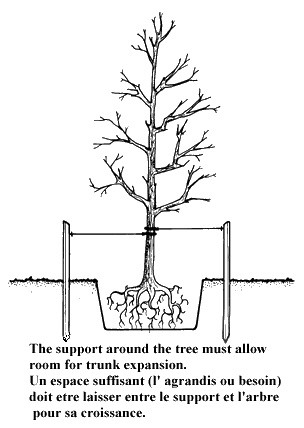Soil Amendment
Organic amendments added to the planting hole do not usually help and often hinder the growth of the plant. In an amended planting hole the roots of the plant prefer to remain within the boundaries of the original planting hole and consequently the plant becomes root bound.
For best results if the soil is very poor, amend the soil over the large area where the roots will develop; otherwise drought or saturated conditions could prevail in the amended soil. These stress conditions make it very difficult for plants to grow well.
Clay soils can be amended in several ways to improve the soil structure. Adding organic matter loosens the soil, but because it breaks down rapidly it only provides a temporary change. Adding coarse sand in the proportion of about 1 part sand to 2 parts soil causes a permanent, beneficial soil change.
Drainage
There are several ways to treat drainage problems in soils. A percolation test will indicate if the soil is properly drained. Dig a hole 30-40 cm deep, and fill with water several times during the day to wet it. Fill the hole again in the evening; if the water has not drained in 24 hours then the soil is imperfectly drained.
The easiest way to deal with imperfectly drained soils is by choosing plants that tolerate poor drainage, or plants can be planted in shallow mounds above the existing grade. A more effective but more difficult way to deal with imperfect drainage is by installing a tile or gravel drainage system.

